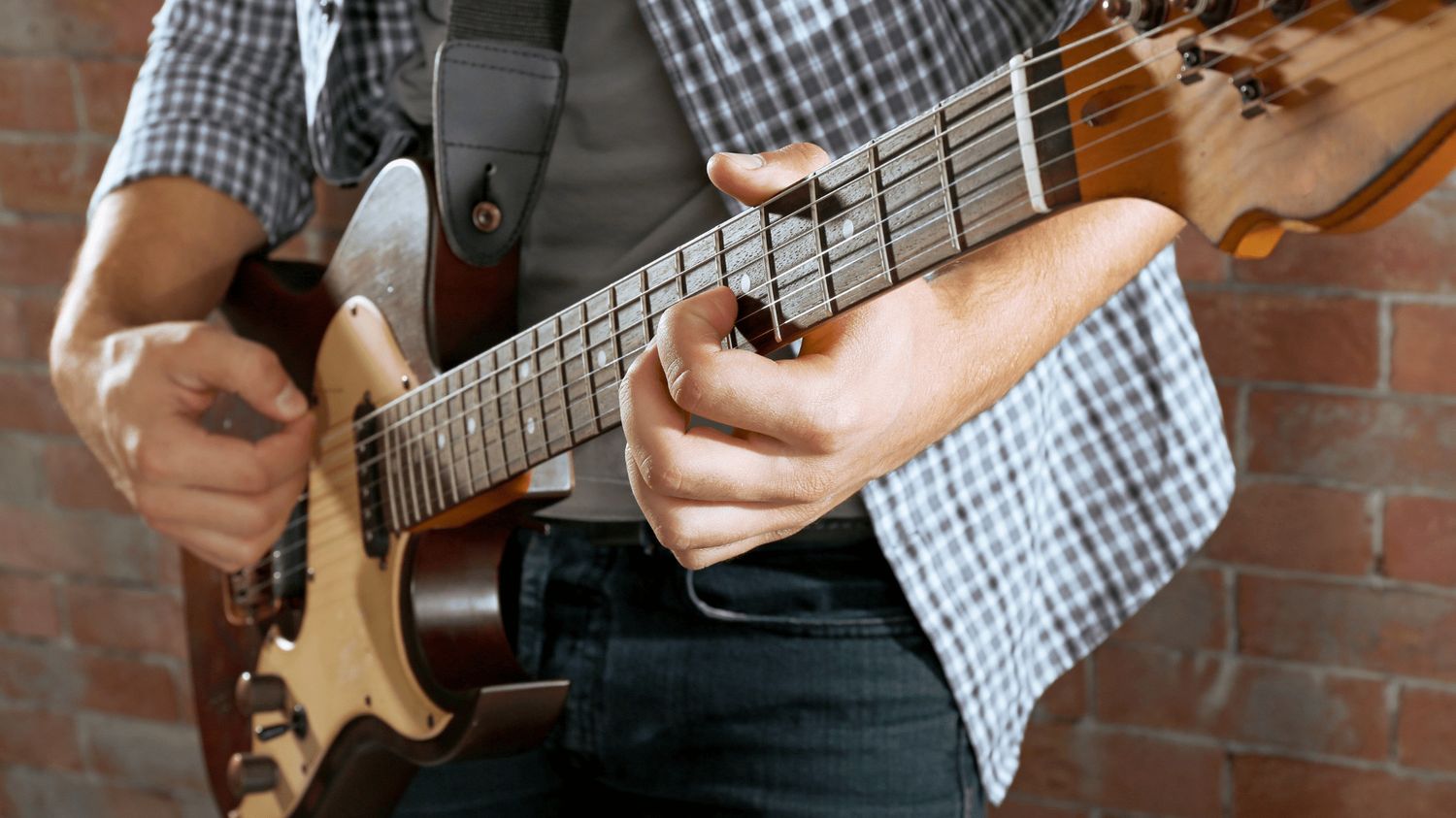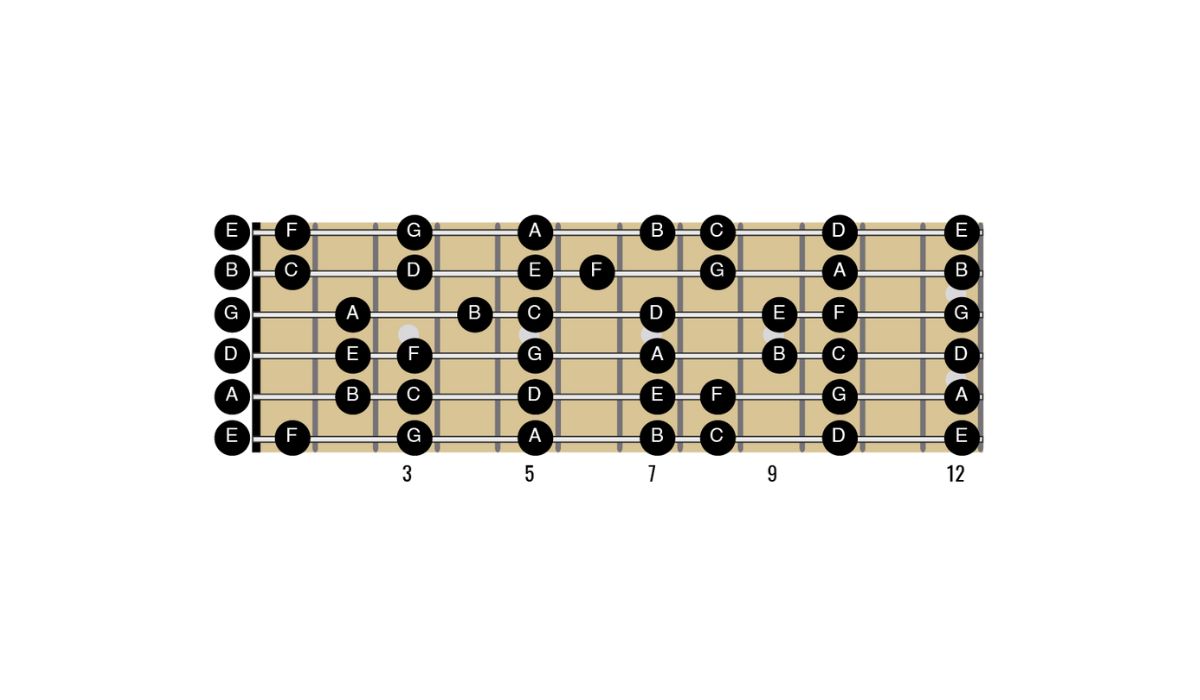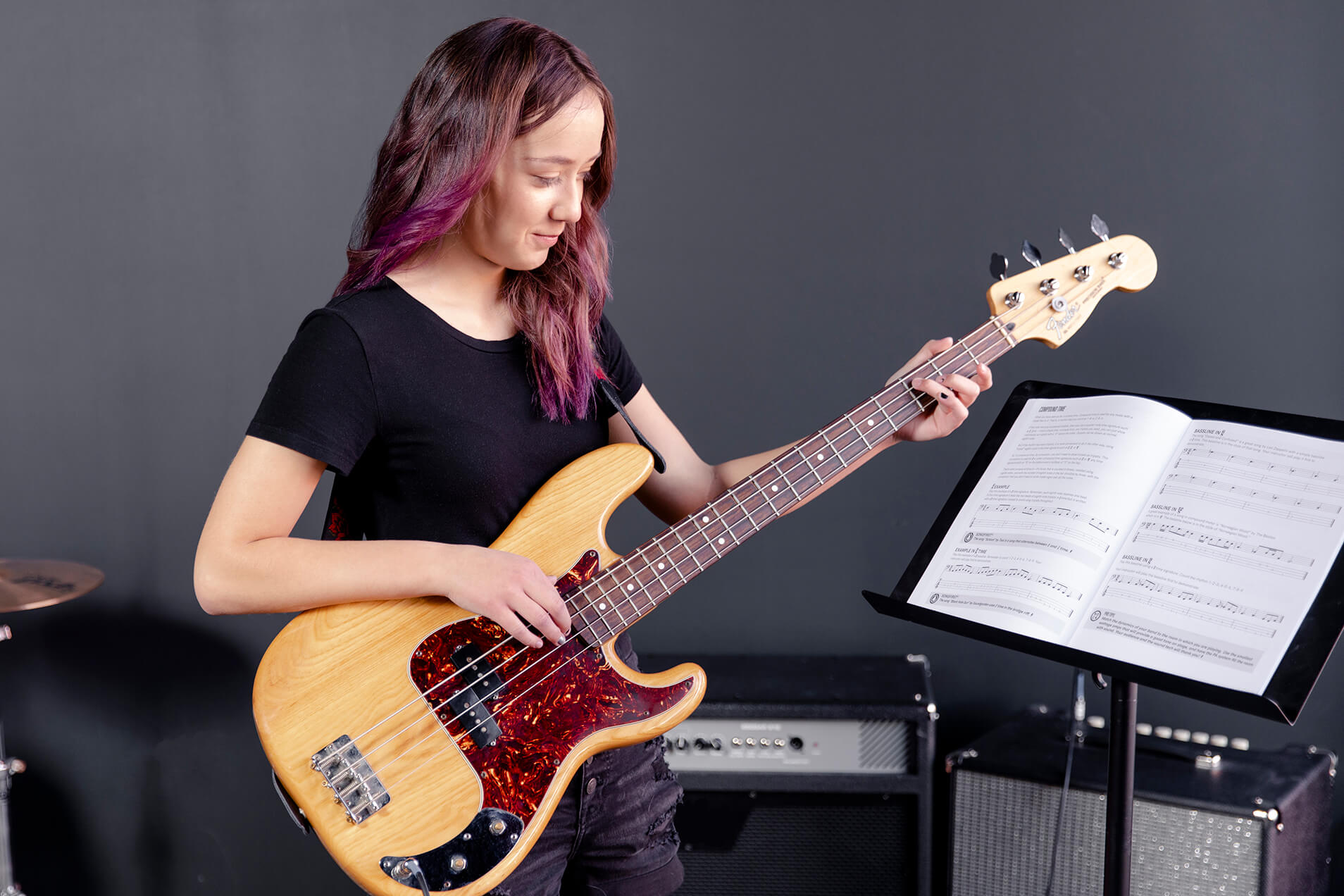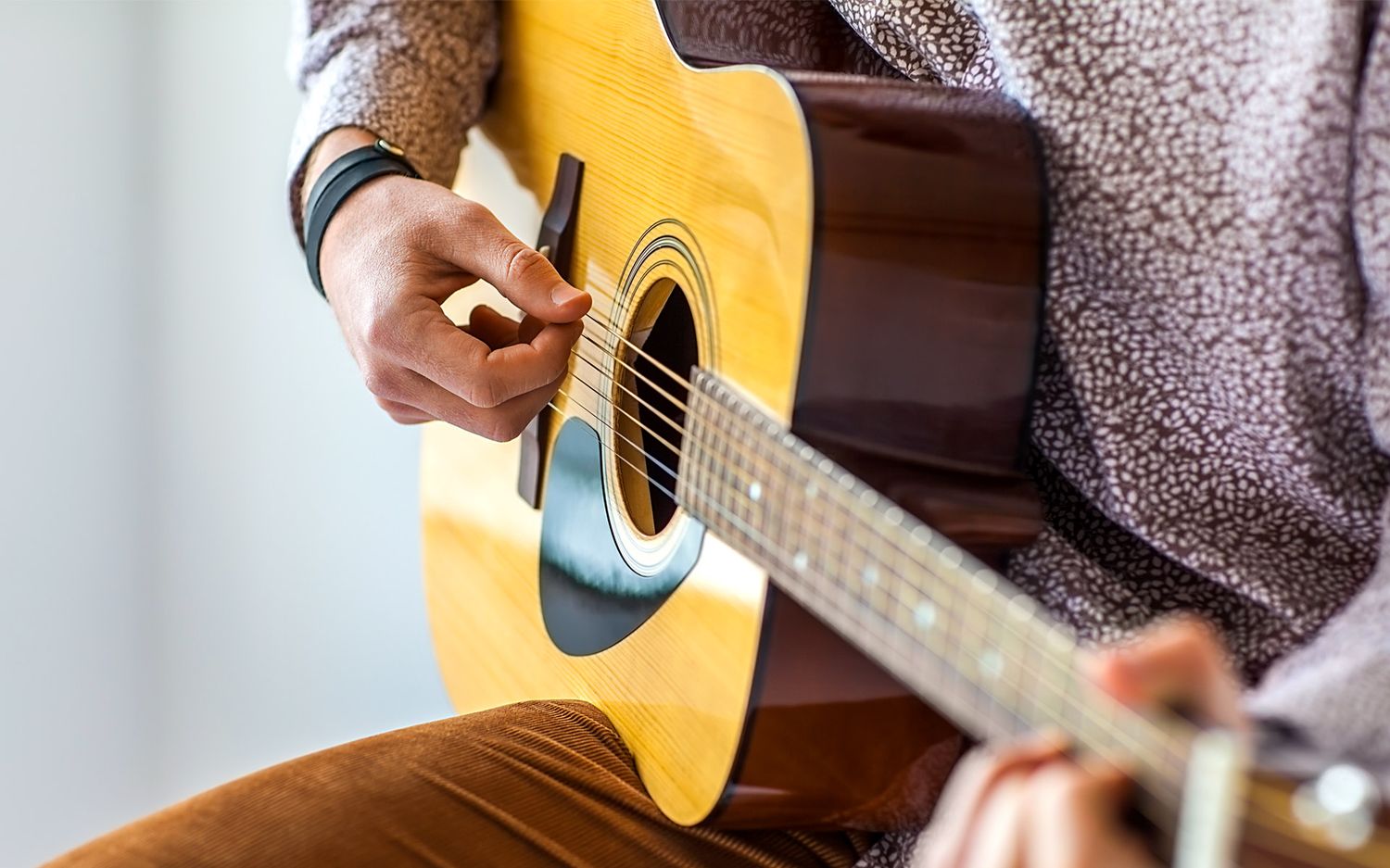Home>Instruments>Guitar>How To Learn The Notes On A Guitar
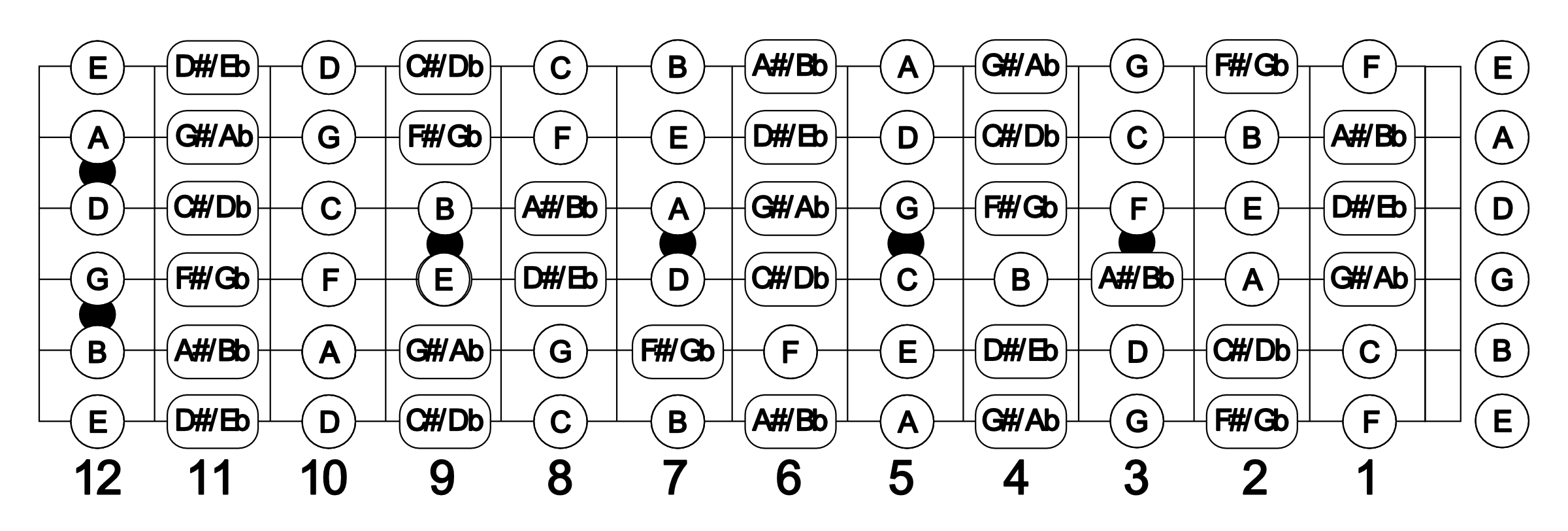

Guitar
How To Learn The Notes On A Guitar
Published: February 13, 2024
Learn how to quickly and easily master the notes on a guitar with our comprehensive guide. Discover essential techniques and tips for guitarists.
(Many of the links in this article redirect to a specific reviewed product. Your purchase of these products through affiliate links helps to generate commission for AudioLover.com, at no extra cost. Learn more)
Table of Contents
Introduction
Learning to play the guitar is an incredibly rewarding journey. Whether you're a complete beginner or have been strumming for a while, understanding the notes on the guitar fretboard is a crucial aspect of mastering the instrument. The ability to identify and locate notes on the fretboard not only enhances your playing skills but also opens up a world of musical possibilities, allowing you to learn songs more efficiently, improvise with confidence, and communicate effectively with other musicians.
Navigating the fretboard might seem daunting at first, but with the right approach and a bit of practice, you can quickly gain a solid grasp of the notes. In this comprehensive guide, we'll explore effective strategies for learning the notes on a guitar, empowering you to unlock the full potential of this versatile instrument. From understanding the layout of the fretboard to employing mnemonic devices and engaging in focused practice, we'll cover everything you need to know to become proficient in note recognition.
So, grab your guitar, tune up, and get ready to embark on an enriching journey through the intricate world of guitar notes. Whether you aspire to strum soothing melodies, unleash scintillating solos, or delve into complex chord progressions, mastering the notes on the guitar fretboard is a pivotal step toward realizing your musical aspirations. Let's dive in and demystify the art of navigating the fretboard with confidence and precision.
Understanding the Guitar Fretboard
Before delving into the specifics of note memorization, it’s essential to grasp the fundamental layout of the guitar fretboard. The fretboard is the long, slender piece of wood affixed to the guitar neck, typically adorned with metal frets that divide it into distinct segments. Each fret represents a half step, allowing for a wide range of notes to be produced across the length of the neck.
Most guitars feature dot inlays on the fretboard, serving as visual markers to aid in orientation. These markers are strategically positioned at specific frets, commonly at the 3rd, 5th, 7th, 9th, 12th, 15th, and 17th frets. Additionally, the 12th fret marks the midpoint of the fretboard, where the body meets the neck, and often bears a double dot or a distinct inlay design, signifying the octave.
Understanding the relationship between the strings and the frets is crucial. The guitar strings are traditionally tuned to EADGBE, with the thickest string (low E) located at the top when holding the instrument in playing position. Each fret represents a higher note when pressed, allowing for a myriad of pitches to be produced. As you move up the fretboard, the pitch of the notes ascends accordingly.
By familiarizing yourself with the layout of the fretboard and the tuning of the strings, you’ll develop a solid foundation for note recognition. This knowledge forms the basis for effectively identifying and locating notes as you progress in your guitar journey. With this understanding in place, you’re ready to embark on the exciting endeavor of memorizing the notes on each string.
Memorizing the Notes on Each String
Memorizing the notes on each string of the guitar is a vital step towards fluency and confidence in playing the instrument. The standard tuning of the guitar, EADGBE, provides a framework for learning the notes across the strings. Starting with the low E string, commonly referred to as the 6th string, and progressing to the high E string, or the 1st string, you can systematically internalize the notes along each string.
Begin by familiarizing yourself with the natural notes on the low E string, which are E, F, G, A, B, C, and D. As you move across the fretboard, each fret represents a half step, leading to the sequential progression of notes. Utilizing mnemonic devices or visual patterns can aid in memorization. For instance, associating the 5th fret with the note A can be remembered by the acronym “All Cows Eat Grass,” aligning with the notes A, C, E, and G, which are located on the 5th, 3rd, 2nd, and 1st frets respectively.
Similarly, exploring the notes on the A string, D string, G string, B string, and high E string allows for a comprehensive understanding of the fretboard. By recognizing the patterns and intervals between the notes, you can efficiently commit the fretboard layout to memory. This knowledge empowers you to navigate the fretboard with ease, locate specific notes for chord formations, and improvise melodies with fluidity.
As you acquaint yourself with the notes on each string, consider integrating practical exercises into your practice routine. Engage in scale drills, chord progressions, and simple melodies to reinforce your knowledge of the notes across the fretboard. By incorporating these exercises into your daily practice, you’ll enhance your muscle memory and note recognition skills, paving the way for seamless and expressive guitar playing.
By dedicating focused effort to memorizing the notes on each string, you’ll elevate your proficiency and confidence as a guitarist. This foundational knowledge serves as a springboard for further exploration, enabling you to delve into advanced techniques, musical theory, and diverse genres with a solid understanding of the guitar fretboard.
Utilizing Mnemonics and Memory Aids
Employing mnemonics and memory aids can significantly facilitate the process of memorizing the notes on the guitar fretboard. Mnemonics are memory devices that leverage associations, acronyms, or patterns to aid in retention and recall. These creative tools can transform the seemingly daunting task of note memorization into an engaging and effective endeavor.
One popular mnemonic for remembering the open strings of the guitar is “Eddie Ate Dynamite, Good Bye Eddie.” This phrase corresponds to the strings EADGBE, aligning with the standard tuning of the guitar from the thickest to the thinnest string. By incorporating this mnemonic into your practice routine, you can swiftly internalize the string names and their respective pitches.
For memorizing the natural notes on each string, mnemonic phrases and visual associations can be immensely helpful. Creating a personalized mnemonic, such as “Elephants And Donkeys Grow Big Ears” for the notes on the low E string (E, A, D, G, B, E), can enhance retention and make the learning process more enjoyable. Additionally, visual aids, such as fretboard diagrams and interactive apps, can complement mnemonic devices, offering a multi-sensory approach to note memorization.
Another effective memory aid is the use of octave patterns and intervals to identify notes across the fretboard. Understanding the relationship between notes that are one or two octaves apart can streamline the process of locating and recognizing notes in different positions. By internalizing these patterns, you can navigate the fretboard with precision and fluidity, enhancing your overall playing experience.
Furthermore, leveraging memory aids such as flashcards, online quizzes, and interactive games can transform note memorization into an engaging and interactive practice. These resources not only reinforce your knowledge of the fretboard but also infuse an element of enjoyment into the learning process, motivating you to consistently hone your note recognition skills.
By integrating mnemonics, memory aids, and interactive resources into your practice regimen, you can expedite the process of memorizing the notes on the guitar fretboard while fostering a deeper understanding of musical patterns and intervals. These creative tools serve as invaluable companions on your journey to mastering the intricacies of the guitar fretboard.
Practicing and Reinforcing Note Recognition
Consistent and targeted practice is essential for reinforcing note recognition on the guitar fretboard. By incorporating focused exercises and immersive learning techniques into your practice routine, you can solidify your understanding of the notes and develop fluency in navigating the fretboard.
One effective practice approach involves integrating note recognition drills into your daily warm-up routine. Begin by randomly selecting a note on the fretboard and identifying its location across different strings and frets. This exercise enhances your ability to swiftly locate notes, fostering a deeper connection with the fretboard layout. Gradually increase the complexity of the drills by incorporating intervals, scales, and chord shapes, challenging yourself to identify notes within varied musical contexts.
Engaging in scale exercises not only enhances your technical proficiency but also reinforces note recognition. Practice major and minor scales across the fretboard, verbalizing the names of the notes as you ascend and descend. This active engagement with the notes cultivates a strong auditory and visual association, fortifying your ability to identify and articulate notes with precision.
Exploring chord progressions and arpeggios provides an excellent opportunity to reinforce note recognition in a musical context. As you navigate through different chord shapes and voicings, pay close attention to the individual notes comprising each chord. By consciously acknowledging the notes within chords, you deepen your understanding of their positions on the fretboard, facilitating seamless transitions and enriching your musical expression.
Utilize backing tracks and play-along resources to apply your note recognition skills in a dynamic musical setting. Jamming along with diverse musical styles and genres exposes you to varying note patterns and progressions, honing your ability to swiftly identify and respond to different musical motifs. This immersive approach fosters adaptability and versatility, empowering you to confidently navigate the fretboard in real-time musical scenarios.
Recording your practice sessions and reviewing your note recognition performance can offer valuable insights into your progress. By listening back to your playing and identifying areas for improvement, you can refine your note recognition skills and track your growth over time. Additionally, seeking feedback from instructors or fellow musicians can provide constructive guidance and further enrich your learning journey.
By consistently integrating targeted practice routines, scale exercises, chord explorations, and real-world musical applications, you can strengthen your note recognition abilities and cultivate a profound familiarity with the guitar fretboard. Embrace the joy of discovery and the satisfaction of mastering this essential aspect of guitar playing, knowing that each practice session brings you closer to fluency and confidence in navigating the musical landscape of the fretboard.
Conclusion
Congratulations on embarking on the enriching journey of mastering the notes on the guitar fretboard. By delving into the intricate world of note recognition, you have unlocked a gateway to limitless musical exploration and expression. As you reflect on the strategies and techniques explored in this guide, it’s essential to recognize the transformative impact that a deep understanding of the fretboard can have on your musical prowess.
Understanding the layout of the guitar fretboard forms the cornerstone of your musical journey, empowering you to navigate the instrument with confidence and precision. By familiarizing yourself with the fretboard’s structure, string tuning, and visual markers, you have laid a solid foundation for note recognition and musical fluency.
Embracing mnemonics, memory aids, and visual patterns has enriched your learning experience, infusing creativity and engagement into the process of memorizing the notes on each string. These mnemonic devices have not only facilitated retention but have also imbued the learning journey with a sense of playfulness and discovery.
Through consistent and targeted practice, you have reinforced your note recognition skills, honing your ability to swiftly locate and articulate notes across the fretboard. By incorporating scale exercises, chord explorations, and real-world musical applications into your practice routine, you have cultivated a profound familiarity with the guitar fretboard, enhancing your musical dexterity and expressive capabilities.
As you continue to immerse yourself in the art of note recognition, remember that each practice session is a step forward on your path to fluency and confidence as a guitarist. Embrace the joy of discovery and the satisfaction of mastering this essential aspect of guitar playing, knowing that your dedication and perseverance will yield remarkable growth and proficiency.
With each note you recognize and each melody you bring to life, you are nurturing a deep connection with the instrument and expanding your musical horizons. The knowledge and skills you have acquired in this journey will serve as invaluable companions as you explore diverse genres, collaborate with fellow musicians, and embark on your creative endeavors.
May your passion for the guitar continue to inspire your musical pursuits, and may the notes on the fretboard become the building blocks of your artistic expression. Embrace the boundless possibilities that await as you navigate the intricate tapestry of the guitar fretboard with confidence, creativity, and unwavering dedication.

